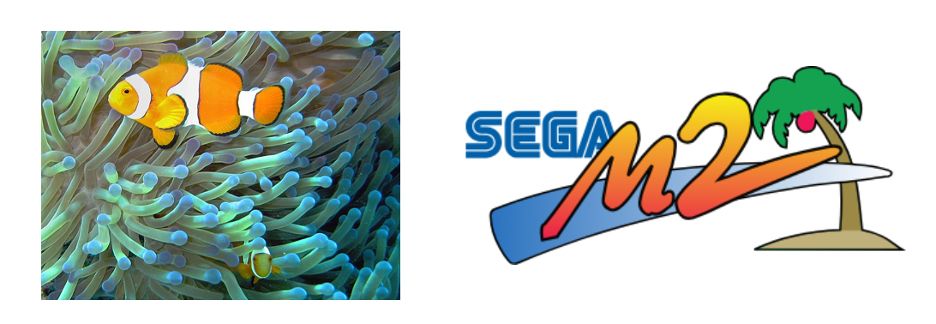
Sergi Valverde
@svalver.bsky.social
#ComplexSystems scientist. Institute of Evolutionary Biology @csic.es, Barcelona| DySOC-UTennessee, Knoxville | ECLT, Venice. Girl dad. He/him.
Lab: svalver.github.io
#EvoBio #CultEvo #ExtendedBiology #hypergraphs
Lab: svalver.github.io
#EvoBio #CultEvo #ExtendedBiology #hypergraphs
Pinball model of development and reprogramming. pmc.ncbi.nlm.nih.gov/articles/PMC...

November 8, 2025 at 7:53 PM
Pinball model of development and reprogramming. pmc.ncbi.nlm.nih.gov/articles/PMC...
The model predicts the characteristic scale R* at which patenting inequality peaks and then declines. This "inequality horizon" occurs when agglomeration and diffusion are balanced--an emergent property of the model rather than an imposed constraint.

November 3, 2025 at 5:05 PM
The model predicts the characteristic scale R* at which patenting inequality peaks and then declines. This "inequality horizon" occurs when agglomeration and diffusion are balanced--an emergent property of the model rather than an imposed constraint.
A simple spatial model with only two rules: (1) local reinforcement (success promotes more innovation) and (2) long-distance diffusion (ideas and inventors can sometimes leap across space) replicates statistical patterns without relying on specific sectors or policies.

November 3, 2025 at 5:05 PM
A simple spatial model with only two rules: (1) local reinforcement (success promotes more innovation) and (2) long-distance diffusion (ideas and inventors can sometimes leap across space) replicates statistical patterns without relying on specific sectors or policies.
The rank-patent distribution appears to evolve with spatial scale. Within urban areas (3-4 km) the distribution resembles a two-regime Zipf law, with less inequality between high-productive locations. Patenting inequality becomes more pronounced at larger scales.

November 3, 2025 at 5:05 PM
The rank-patent distribution appears to evolve with spatial scale. Within urban areas (3-4 km) the distribution resembles a two-regime Zipf law, with less inequality between high-productive locations. Patenting inequality becomes more pronounced at larger scales.
3) A universal "inequality horizon," or emerging inequality scale, was found at approximately 20 kilometers (R* ~ 0.18º). Patenting inequality is measured by the coefficient of variation CV(R), or ratio of patent count standard deviation to mean, across different spatial scales.

November 3, 2025 at 5:05 PM
3) A universal "inequality horizon," or emerging inequality scale, was found at approximately 20 kilometers (R* ~ 0.18º). Patenting inequality is measured by the coefficient of variation CV(R), or ratio of patent count standard deviation to mean, across different spatial scales.
A comparison with null models shows that city size and population density alone cannot account for the observed fractal scaling, f(R)~R^-b. Urban scaling theory captures broad correlations between city size and innovation output but is not sufficient to explain spatial patterns.

November 3, 2025 at 5:05 PM
A comparison with null models shows that city size and population density alone cannot account for the observed fractal scaling, f(R)~R^-b. Urban scaling theory captures broad correlations between city size and innovation output but is not sufficient to explain spatial patterns.
Fractal clustering and scaling laws connect innovation to more general principles found in ecology, cities, and even river networks. Innovation, like other complex systems, grows, clusters, and spreads via feedback and interaction.

November 3, 2025 at 5:05 PM
Fractal clustering and scaling laws connect innovation to more general principles found in ecology, cities, and even river networks. Innovation, like other complex systems, grows, clusters, and spreads via feedback and interaction.
2) Fractal clustering: Innovation hubs are embedded in larger, fractal regional hierarchies. At the largest scale, clusters correspond to US megaregions, demonstrating that localized innovation ecosystems are structurally resilient across spatial scales.

November 3, 2025 at 5:05 PM
2) Fractal clustering: Innovation hubs are embedded in larger, fractal regional hierarchies. At the largest scale, clusters correspond to US megaregions, demonstrating that localized innovation ecosystems are structurally resilient across spatial scales.
After analyzing a century of geo-referenced US #patents across 8 major technological domains, we found three universal patterns of innovation landscapes:
1) Zipfian scaling of patent output: a few hub regions dominate, but many others persist.
1) Zipfian scaling of patent output: a few hub regions dominate, but many others persist.

November 3, 2025 at 5:05 PM
After analyzing a century of geo-referenced US #patents across 8 major technological domains, we found three universal patterns of innovation landscapes:
1) Zipfian scaling of patent output: a few hub regions dominate, but many others persist.
1) Zipfian scaling of patent output: a few hub regions dominate, but many others persist.
Silicon Valley, Boston, and Greater Seattle are well-known, and many countries and regions aspire to their success. But what is driving their long-term success? Is it the resources and policies, or are there hidden self-organizing processes at work?
en.wikipedia.org/wiki/List_of...
en.wikipedia.org/wiki/List_of...

November 3, 2025 at 5:05 PM
Silicon Valley, Boston, and Greater Seattle are well-known, and many countries and regions aspire to their success. But what is driving their long-term success? Is it the resources and policies, or are there hidden self-organizing processes at work?
en.wikipedia.org/wiki/List_of...
en.wikipedia.org/wiki/List_of...
Is #innovation born or made? Why do some places keep innovating while others fall behind? Is innovation the product of cities—or of deeper laws?
Our new paper in npj Complexity explores these questions through the lens of a century of US patent data.🧵👇
nature.com/articles/s44...
Our new paper in npj Complexity explores these questions through the lens of a century of US patent data.🧵👇
nature.com/articles/s44...

November 3, 2025 at 5:05 PM
Is #innovation born or made? Why do some places keep innovating while others fall behind? Is innovation the product of cities—or of deeper laws?
Our new paper in npj Complexity explores these questions through the lens of a century of US patent data.🧵👇
nature.com/articles/s44...
Our new paper in npj Complexity explores these questions through the lens of a century of US patent data.🧵👇
nature.com/articles/s44...
My favorite second hand bookstore! Get lost in the stacks.

October 2, 2025 at 12:17 PM
My favorite second hand bookstore! Get lost in the stacks.
All of the noise and misinformation on social media, as well as the neverending celebration of stupidity, encourages us to seek refuge in books and old papers. See you soon.

September 28, 2025 at 10:21 AM
All of the noise and misinformation on social media, as well as the neverending celebration of stupidity, encourages us to seek refuge in books and old papers. See you soon.
Exciting to see the major transitions in evolution framework spanning biology, technology and now human–AI systems. From stone tools to software, humans adapt with technology — today’s large language models are just the latest iteration.
royalsocietypublishing.org/doi/10.1098/...
royalsocietypublishing.org/doi/10.1098/...

September 11, 2025 at 8:00 PM
Exciting to see the major transitions in evolution framework spanning biology, technology and now human–AI systems. From stone tools to software, humans adapt with technology — today’s large language models are just the latest iteration.
royalsocietypublishing.org/doi/10.1098/...
royalsocietypublishing.org/doi/10.1098/...
Very elegant approach, thanks for sharing, Andrej! Kudos to the authors for avoiding arbitrarily complex and obscure AI-based pipelines to support their argument. Science should always be centered around fostering understanding.

September 8, 2025 at 7:47 PM
Very elegant approach, thanks for sharing, Andrej! Kudos to the authors for avoiding arbitrarily complex and obscure AI-based pipelines to support their argument. Science should always be centered around fostering understanding.
I've never been a master of soul-like games, unlike my friends @blaividiella.bsky.social & @sduran-nebreda.bsky.social. Also, I found the beautiful environments, captivating soundtrack, & enchanting characters, such as this academic druid, to be quite distracting and difficult to progress through!

September 7, 2025 at 6:12 PM
I've never been a master of soul-like games, unlike my friends @blaividiella.bsky.social & @sduran-nebreda.bsky.social. Also, I found the beautiful environments, captivating soundtrack, & enchanting characters, such as this academic druid, to be quite distracting and difficult to progress through!
Collapse ≠ disappearance. In biology 🦖, some lineages persist as “living fossils.” In arcade games 🎮, the Maze or Pinball genres survived but lost innovation potential once imitation surpassed collaboration.

August 21, 2025 at 1:03 PM
Collapse ≠ disappearance. In biology 🦖, some lineages persist as “living fossils.” In arcade games 🎮, the Maze or Pinball genres survived but lost innovation potential once imitation surpassed collaboration.
Within ecosystems 🌱 , mutualisms contribute to resilience.
In arcade genres 🎮 --such as Fighters and Driving--collaborations between firms promoted innovation, while clone-heavy genres experienced stagnation.
In arcade genres 🎮 --such as Fighters and Driving--collaborations between firms promoted innovation, while clone-heavy genres experienced stagnation.

August 21, 2025 at 12:59 PM
Within ecosystems 🌱 , mutualisms contribute to resilience.
In arcade genres 🎮 --such as Fighters and Driving--collaborations between firms promoted innovation, while clone-heavy genres experienced stagnation.
In arcade genres 🎮 --such as Fighters and Driving--collaborations between firms promoted innovation, while clone-heavy genres experienced stagnation.
In biology, the relationship between body size and metabolic rate follow scaling laws. In arcade systems, CPU speed scales with ROM size in a similar way, constraining what kinds of games could exist.

August 21, 2025 at 12:49 PM
In biology, the relationship between body size and metabolic rate follow scaling laws. In arcade systems, CPU speed scales with ROM size in a similar way, constraining what kinds of games could exist.
It's been a fun ride! I'd like to thank my coauthors,
@blaividiella.bsky.social, @andrejpaleo.bsky.social, and Alex Bentley. We are grateful to the Arcade Vintage Museum @museoarcadevintage.bsky.social, which houses one of the best arcade collections and provided excellent technical support.
@blaividiella.bsky.social, @andrejpaleo.bsky.social, and Alex Bentley. We are grateful to the Arcade Vintage Museum @museoarcadevintage.bsky.social, which houses one of the best arcade collections and provided excellent technical support.

August 20, 2025 at 1:11 PM
It's been a fun ride! I'd like to thank my coauthors,
@blaividiella.bsky.social, @andrejpaleo.bsky.social, and Alex Bentley. We are grateful to the Arcade Vintage Museum @museoarcadevintage.bsky.social, which houses one of the best arcade collections and provided excellent technical support.
@blaividiella.bsky.social, @andrejpaleo.bsky.social, and Alex Bentley. We are grateful to the Arcade Vintage Museum @museoarcadevintage.bsky.social, which houses one of the best arcade collections and provided excellent technical support.
This is not only about video games. Similar macroevolutionary dynamics may influence music, literature, open-source software, and even science. Innovation thrives in systems that promote recombination rather than endless replication.

August 20, 2025 at 1:11 PM
This is not only about video games. Similar macroevolutionary dynamics may influence music, literature, open-source software, and even science. Innovation thrives in systems that promote recombination rather than endless replication.
So what exactly does "collapse" mean? Not always a disappearance. When bootlegs became more common than collaborations, innovation slowed, and their genres became visible but evolutionary stable.

August 20, 2025 at 1:11 PM
So what exactly does "collapse" mean? Not always a disappearance. When bootlegs became more common than collaborations, innovation slowed, and their genres became visible but evolutionary stable.
In contrast, imitation-dominated genres came to a halt in their creative evolution, consistent with the "dilution of expertise" hypothesis. www.nature.com/articles/s41...

August 20, 2025 at 1:11 PM
In contrast, imitation-dominated genres came to a halt in their creative evolution, consistent with the "dilution of expertise" hypothesis. www.nature.com/articles/s41...
For example, fighter games such as Street Fighter II and Mortal Kombat defined complex gameplay: 6-button layouts, combo mechanics, graphics hardware for large characters, and tournament cultures that, when combined, established long-lasting ecosystems.

August 20, 2025 at 1:11 PM
For example, fighter games such as Street Fighter II and Mortal Kombat defined complex gameplay: 6-button layouts, combo mechanics, graphics hardware for large characters, and tournament cultures that, when combined, established long-lasting ecosystems.
Arcade genres evolved into new technological morphospaces based on CPU speed (S) and ROM size (M), following scaling laws S~M^a. Some niches expanded, while others (d) remained stable in densely populated areas. Collaboration and recombination led to trait diversity.

August 20, 2025 at 1:11 PM
Arcade genres evolved into new technological morphospaces based on CPU speed (S) and ROM size (M), following scaling laws S~M^a. Some niches expanded, while others (d) remained stable in densely populated areas. Collaboration and recombination led to trait diversity.

